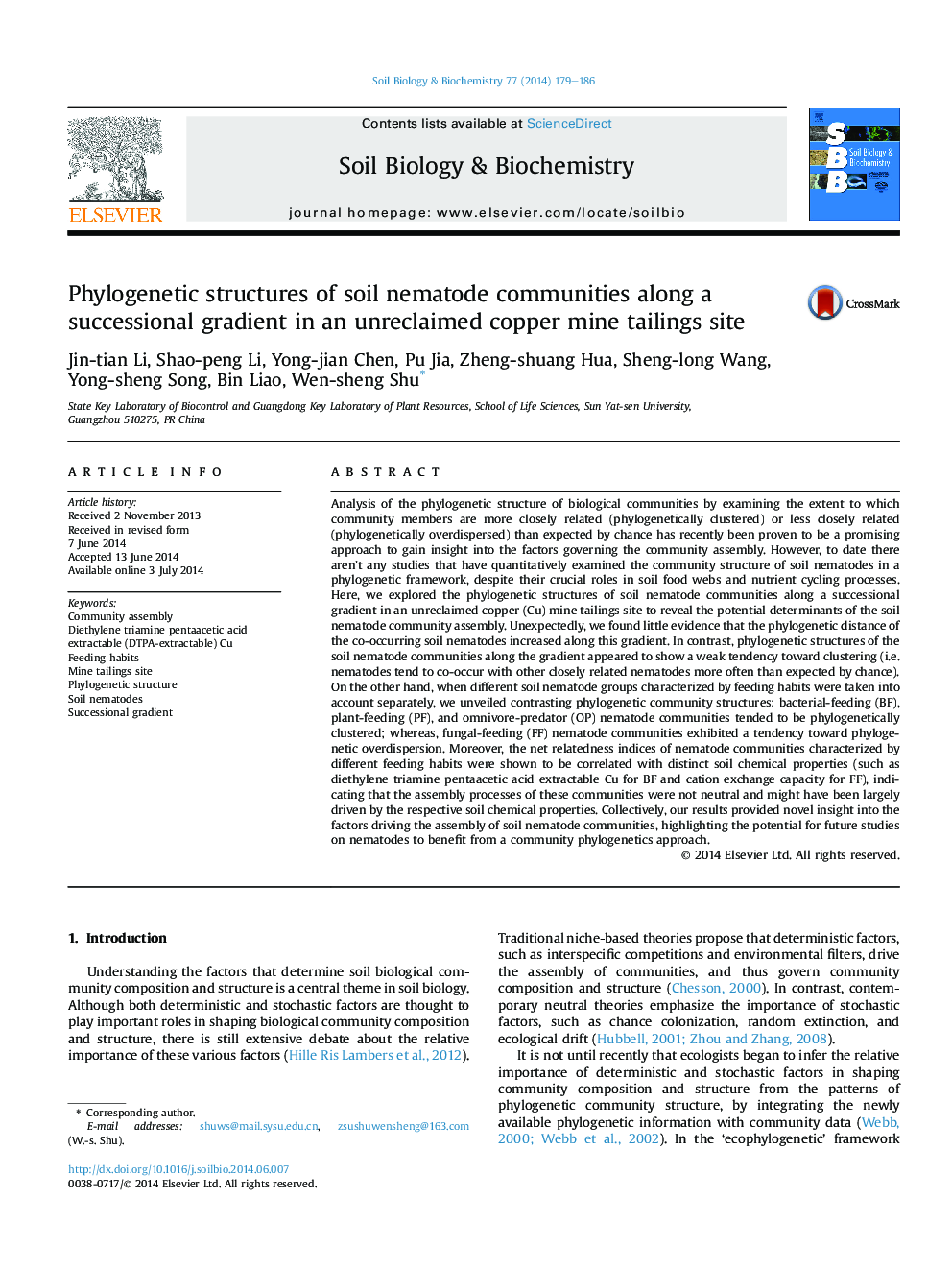| Article ID | Journal | Published Year | Pages | File Type |
|---|---|---|---|---|
| 8364521 | Soil Biology and Biochemistry | 2014 | 8 Pages |
Abstract
Analysis of the phylogenetic structure of biological communities by examining the extent to which community members are more closely related (phylogenetically clustered) or less closely related (phylogenetically overdispersed) than expected by chance has recently been proven to be a promising approach to gain insight into the factors governing the community assembly. However, to date there aren't any studies that have quantitatively examined the community structure of soil nematodes in a phylogenetic framework, despite their crucial roles in soil food webs and nutrient cycling processes. Here, we explored the phylogenetic structures of soil nematode communities along a successional gradient in an unreclaimed copper (Cu) mine tailings site to reveal the potential determinants of the soil nematode community assembly. Unexpectedly, we found little evidence that the phylogenetic distance of the co-occurring soil nematodes increased along this gradient. In contrast, phylogenetic structures of the soil nematode communities along the gradient appeared to show a weak tendency toward clustering (i.e. nematodes tend to co-occur with other closely related nematodes more often than expected by chance). On the other hand, when different soil nematode groups characterized by feeding habits were taken into account separately, we unveiled contrasting phylogenetic community structures: bacterial-feeding (BF), plant-feeding (PF), and omnivore-predator (OP) nematode communities tended to be phylogenetically clustered; whereas, fungal-feeding (FF) nematode communities exhibited a tendency toward phylogenetic overdispersion. Moreover, the net relatedness indices of nematode communities characterized by different feeding habits were shown to be correlated with distinct soil chemical properties (such as diethylene triamine pentaacetic acid extractable Cu for BF and cation exchange capacity for FF), indicating that the assembly processes of these communities were not neutral and might have been largely driven by the respective soil chemical properties. Collectively, our results provided novel insight into the factors driving the assembly of soil nematode communities, highlighting the potential for future studies on nematodes to benefit from a community phylogenetics approach.
Related Topics
Life Sciences
Agricultural and Biological Sciences
Soil Science
Authors
Jin-tian Li, Shao-peng Li, Yong-jian Chen, Pu Jia, Zheng-shuang Hua, Sheng-long Wang, Yong-sheng Song, Bin Liao, Wen-sheng Shu,
